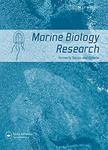版权所有:内蒙古大学图书馆 技术提供:维普资讯• 智图
内蒙古自治区呼和浩特市赛罕区大学西街235号 邮编: 010021

作者机构:Ocean Univ China Fisheries Coll Qingdao Peoples R China Univ Maine Sch Marine Sci Orono ME USA Ocean Univ China Coll Ocean & Atmospher Sci Qingdao Peoples R China Qingdao Natl Lab Marine Sci & Technol Lab Marine Fisheries Sci & Food Prod Proc Qingdao Peoples R China
出 版 物:《MARINE BIOLOGY RESEARCH》 (海洋生物学研究)
年 卷 期:2018年第14卷第5期
页 面:508-523页
核心收录:
学科分类:0710[理学-生物学] 07[理学] 071004[理学-水生生物学] 0713[理学-生态学]
基 金:National Natural Science Foundation of China State's Key Project of Research and Development Plan [2017YFE0104400] Fundamental Research Funds for the Central Universities [201562030, 201612004] Scientific and Technological Innovation Project - Qingdao National Laboratory for Marine Science and Technology [2015ASKJ02]
主 题:Haizhou Bay Saurida elongate generalized additive model prey biotic variables habitat
摘 要:The predictive skill of species distribution models depends on the quality and quantity of input information. In addition to the physical environmental variables, prey availability is also one of the main drivers regulating spatial distribution of marine species. However, prey distribution data have rarely been considered in habitat models due to the lack of information on non-commercial prey species. This may lead to an incomplete view of species distributions and biased model predictions. In this study, we developed a new framework of two-phase generalized additive models (GAMs) based on the Tweedie distribution to incorporate the predicted prey abundance as covariates in habitat models, and applied this framework to juvenile slender lizardfish Saurida elongata in Haizhou Bay, China. This study demonstrated that the predictive skill of habitat models could be greatly improved through incorporating prey abundance as explanatory variables. The importance of prey distribution data in the habitat model confirms the essentiality of including prey data while modelling species distribution. Spatial overlap and GAM analysis demonstrated that not all dominant prey can be selected as potential explanatory variables and only those prey species showing high spatiotemporal occurrences with predators should be incorporated. The framework derived in this study could be extended to other marine organisms to improve the predictive skill of habitat models and enhance our understanding of the ecological mechanisms underlying the distribution of marine species.